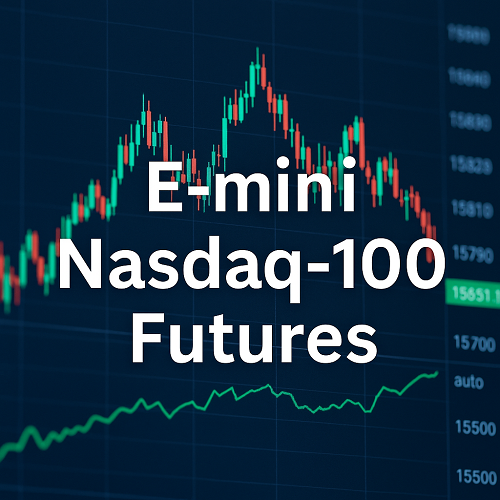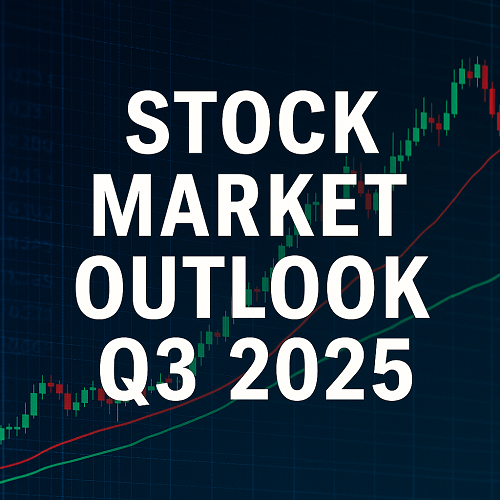The Pulse of Modern Tech-Driven Markets
Few markets reflect innovation, volatility, and opportunity as vividly as the Nasdaq-100. For active and algorithmic traders, the E-mini Nasdaq-100 futures contract (NQ) represents a gateway to this fast-moving index—delivering precision, liquidity, and scalability unmatched by most equity instruments.
Launched by the Chicago Mercantile Exchange (CME) in 1999, the E-mini Nasdaq-100 condenses the performance of 100 of the largest non-financial companies listed on the Nasdaq exchange into a single, highly tradable product. Its efficiency and accessibility have made NQ a cornerstone of short-term trading systems, hedging strategies, and algorithmic models worldwide.
Understanding the E-mini Nasdaq-100 Futures Contract
The E-mini Nasdaq-100 (ticker: NQ) tracks the Nasdaq-100 Index, an equity benchmark heavily weighted toward technology, biotech, and consumer innovation. Companies like Apple, Microsoft, NVIDIA, Amazon, and Meta dominate its composition—making NQ a proxy for global tech sentiment.
Key Contract Specifications
| Specification | Detail |
|---|---|
| Exchange | CME (Globex) |
| Symbol | NQ |
| Contract Size | $20 × Nasdaq-100 Index |
| Minimum Tick | 0.25 index points |
| Tick Value | $5.00 per tick |
| Trading Hours | Nearly 24 hours (Sunday–Friday, 6 p.m.–5 p.m. ET) |
| Contract Months | March, June, September, December |
| Settlement | Cash-settled based on Nasdaq-100 closing value |
| Clearinghouse | CME Clearing (regulated, centrally cleared) |
This structure makes the contract accessible to both institutional and sophisticated retail traders seeking exposure to U.S. tech giants without the need to buy individual shares or ETFs.
Why Algorithmic and Active Traders Favor NQ Futures
a. Deep Liquidity and Tight Spreads
The E-mini Nasdaq-100 consistently ranks among the most liquid futures contracts globally. High trading volume translates to tight bid-ask spreads, making it ideal for high-frequency, scalping, and momentum strategies where execution cost efficiency is critical.
b. Leverage and Capital Efficiency
Each NQ contract controls a notional value roughly equal to $20 × index level. For instance, at an index level of 18,000, one contract represents $360,000 in exposure. Yet margin requirements are typically only a small fraction of that—often between 5–10%, depending on the broker and volatility.
This capital efficiency allows traders to deploy advanced portfolio and risk-weighted strategies without tying up large capital reserves.
c. 24-Hour Market Access
With electronic trading nearly around the clock, NQ futures enable algorithmic systems to react to global news, Asian market sentiment, or macroeconomic data releases in real time. Unlike equities or ETFs, which are bound by exchange hours, the E-mini market’s continuity supports continuous data modeling and backtesting across sessions.
d. Uniform Data and Robust Infrastructure
NQ futures benefit from clean, standardized tick data and low-latency CME Globex feeds—crucial for algorithmic traders optimizing execution speed and slippage control.
The CME’s infrastructure provides deterministic order matching, allowing quantitative traders to analyze order-book depth, micro-price movement, and volume profile data with exceptional clarity.
Market Microstructure: The Edge in Understanding Flow
For algorithmic participants, edge often lies in understanding order flow and liquidity dynamics. The E-mini Nasdaq-100 features:
- High depth of book: Multiple layers of liquidity on both sides of the spread.
- Consistent volatility clustering: Predictable high-volatility windows during economic releases (e.g., 8:30 a.m. ET macro data, 2 p.m. ET FOMC events).
- Institutional participation: Quant hedge funds, prop trading firms, and CTA systems generate algorithmic liquidity, creating predictable intraday volume cycles.
Successful systems often adapt to this structure by leveraging volatility filters, dynamic stop placement, and intraday session models—tools that exploit repeatable liquidity behaviors rather than directional bias.
Core Trading Strategies in NQ Futures
a. Intraday Momentum and Scalping
Algorithmic scalpers target micro-trends during the most liquid hours (8:30 a.m.–11:30 a.m. ET). Momentum models rely on volume surges, delta imbalance, and order-flow confirmation to capture 3–10 tick bursts.
b. Mean Reversion
The Nasdaq-100 often exhibits overextensions during low-liquidity periods. Reversion systems monitor VWAP deviations, statistical z-scores, or bollinger channel extremes to fade short-term dislocations.
c. Spread and Arbitrage
NQ futures can be paired with:
- E-mini S&P 500 (ES) for relative index spread trading
- Micro NQ contracts (MNQ) for scaling or risk-weighted exposure
- Nasdaq-100 ETFs (QQQ) for statistical arbitrage or hedge adjustment
d. Overnight and Event-Driven Systems
Many quantitative models exploit overnight gaps or reactions to earnings, CPI, or Fed rate announcements. Because NQ trades almost 24 hours, systems can integrate pre-market volatility mapping and global correlation metrics to anticipate movement before the U.S. session opens.
Risk Management and System Design Considerations
Leverage Discipline
With margin as low as a few thousand dollars per contract, risk management is paramount. Algorithmic systems must integrate dynamic position sizing and volatility-adjusted stops to prevent account drawdown under leverage.
Slippage and Latency
Execution efficiency often separates profitable systems from unprofitable ones.
Professional traders measure fill quality, queue position, and order-book response under varying volatility regimes. Systems should account for network latency, brokerage routing, and exchange matching-engine behavior.
Drawdown Control and Equity Curve Smoothing
Advanced frameworks employ Monte Carlo stress testing, rolling Sharpe ratio analysis, and max drawdown thresholds to evaluate robustness. Successful models are those that maintain performance across different volatility clusters and policy cycles.
Comparison: E-mini Nasdaq-100 vs. Alternatives
| Instrument | Exposure | Margin Efficiency | Liquidity | Shorting Ease | Typical Use |
|---|---|---|---|---|---|
| NQ Futures | Direct exposure to Nasdaq-100 | Very high | Exceptional | No restrictions | Algorithmic & institutional trading |
| Micro NQ (MNQ) | 1/10th size of NQ | Moderate | High | No restrictions | Retail and system testing |
| QQQ ETF | Equity-based exposure | Low leverage | High | Requires borrow | Long-term investors |
| CFDs / Synthetic Indices | Broker dependent | Varies | Medium | Easy short access | Retail speculative trading |
For Canadian traders, futures offer advantages unavailable in CFD or domestic ETF markets. Futures are centrally cleared, USD-denominated, and tax-efficient under certain structures, though cross-currency margin requirements must be managed carefully.
Accessing NQ Futures from Canada
Canadian traders can access E-mini Nasdaq-100 futures via IIROC-regulated or global multi-asset brokers.
Top Platforms for Algorithmic Trading
- Interactive Brokers (IBKR): Full CME access, Python and FIX API, robust automation support.
- CQG / Rithmic / NinjaTrader: Deep integration with CME Globex for advanced execution.
- Tradestation / MetaTrader 5 with CQG feed: Hybrid manual-quantitative setups.
Margin and Currency Considerations
Because NQ contracts are USD-settled, Canadian traders must manage FX exposure and maintain USD funding.
Initial margins (subject to change) typically range between $15,000–$20,000 USD per contract, with intraday margin often lower for active day-trade accounts.
Regulatory Notes
Trading CME futures requires compliance with IIROC and NFA standards through approved intermediaries.
Professional accounts can apply for cross-margining and futures portfolio margin to reduce capital requirements when offsetting correlated positions.
What Moves the Nasdaq-100—and, By Extension, NQ Futures
Algorithmic strategies rely on identifying consistent catalysts. Major drivers include:
- U.S. economic releases: CPI, employment, retail sales, and GDP data create sharp volatility spikes.
- Federal Reserve policy shifts: Rate decisions and forward guidance heavily influence risk appetite.
- Earnings season: Tech giants like Apple and NVIDIA can move the entire index.
- Global risk sentiment: Asian market openings, geopolitical events, and bond-yield movements.
- Volatility derivatives: Implied volatility shifts in Nasdaq-100 options markets often pre-empt NQ futures moves.
Quantitative traders map these influences into feature sets—volatility regimes, macro correlation coefficients, and sentiment indicators—to power predictive models.
Advanced Algorithmic Trading Concepts in NQ Futures
a. Volatility-Adaptive Systems
Dynamic algorithms adjust position size or stop distance based on realized vs. implied volatility. This ensures consistent risk-per-trade despite changing market conditions.
b. Machine Learning Applications
Modern quant systems increasingly apply classification and regression models (e.g., random forests, XGBoost) trained on historical order-flow or macro data to predict intraday bias.
c. Statistical Arbitrage Across Indices
Traders deploy co-integration and correlation models between NQ, ES, and Dow (YM) futures to identify mean-reverting spreads.
d. Regime Detection
Algorithmic detection of bull, bear, and neutral volatility regimes allows dynamic switching between strategies—momentum vs. mean reversion—maximizing adaptability.
Managing Risk, Margin, and Leverage
E-mini Nasdaq-100 futures amplify both potential gains and losses.
Professional traders follow disciplined frameworks:
- Define per-trade risk as a fixed percentage of account equity.
- Use volatility-scaled stops rather than fixed-tick exits.
- Avoid over-leveraging—especially in correlated tech portfolios.
- Monitor margin utilization across simultaneous positions.
- Prepare for intraday margin changes during high-volatility events.
CME’s real-time risk engine adjusts margin dynamically, so systems must be robust against sudden requirements. Failure to meet margin calls can lead to forced liquidation at unfavorable prices.
Tax and Structural Considerations
For U.S. traders, NQ futures fall under Section 1256, offering blended tax treatment (60% long-term, 40% short-term).
For Canadian residents, gains are taxed as capital gains or business income depending on activity level—consulting a tax professional familiar with cross-border futures is essential.
Because trades are USD-settled, gains and losses may also create foreign exchange effects.
Key Advantages Recap
- High liquidity and global participation
- Lower cost vs ETFs for large exposure
- Round-the-clock access for global event trading
- Standardized tick data for algorithmic backtesting
- Leverage with central clearing for institutional safety
Common Mistakes New NQ Traders Make
- Over-leveraging early accounts — ignoring volatility spikes.
- Backtesting bias — not including slippage, latency, or changing volatility regimes.
- Neglecting overnight risk — failing to flatten positions before illiquid hours.
- Underestimating macro catalysts — CPI and FOMC events dominate intraday action.
- Ignoring correlation risk — trading NQ and high-beta tech stocks simultaneously.
Avoiding these pitfalls requires risk awareness, disciplined execution, and continuous system evaluation.
Frequently Asked Questions
What is the tick value of an E-mini Nasdaq-100 contract?
Each tick is worth $5.00, representing a 0.25-point move in the index.
When do NQ futures trade?
They trade almost 24 hours a day from Sunday 6 p.m. ET to Friday 5 p.m. ET, with a one-hour maintenance break daily.
How much capital is required to trade one NQ contract?
Margins fluctuate but typically range between $15,000–$20,000 USD initial, and about half that for maintenance.
Can Canadians trade NQ futures?
Yes. Through IIROC-approved brokers such as Interactive Brokers or TD Direct Investing (Global Markets), Canadians can trade CME products in USD accounts.
How do I roll an expiring contract?
Most traders roll during the week prior to expiration by simultaneously selling the expiring month and buying the next active contract, maintaining continuous exposure.
Final Thoughts: The Algorithmic Opportunity in NQ Futures
The E-mini Nasdaq-100 futures contract stands as one of the most data-rich, liquid, and strategically diverse instruments available to active traders. Whether approached through discretionary setups or quantitative algorithms, NQ provides a laboratory for innovation—where speed, precision, and discipline define success.
For Canadian and global traders alike, mastering NQ means mastering volatility, correlation, and execution efficiency. In a world where milliseconds matter and sentiment turns on a headline, the E-mini Nasdaq-100 remains a benchmark of both technological progress and trading opportunity.





 XAUT-USD
XAUT-USD  AMD
AMD  MARA
MARA  SHOP
SHOP  BULL
BULL  CL=F
CL=F